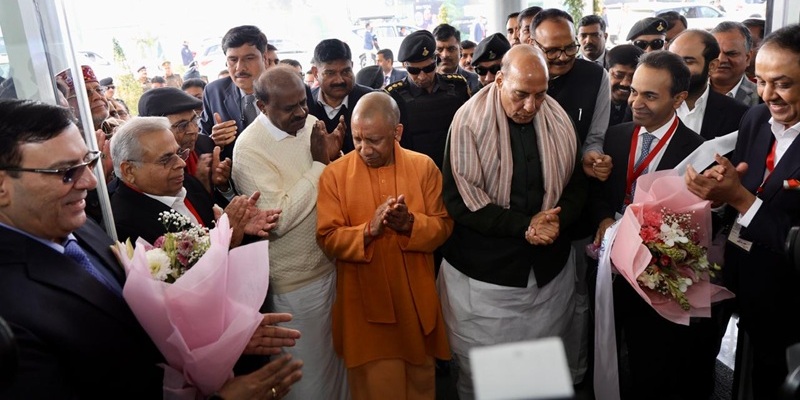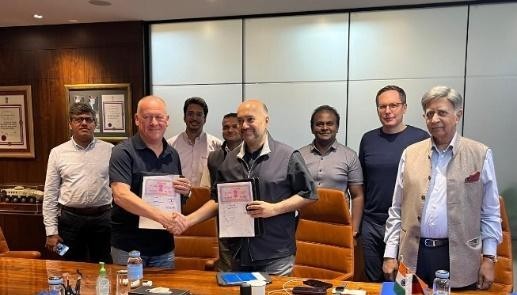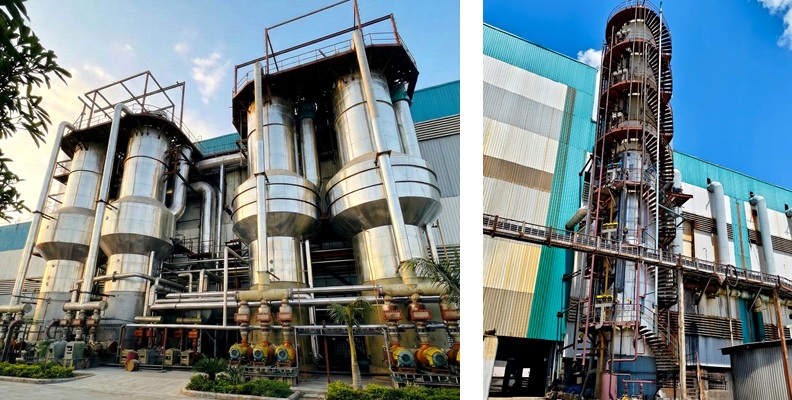Schedule a Call Back
PLI scheme is a clear gamechanger for electronics sector
 Industry News
Industry News- Mar 02,22
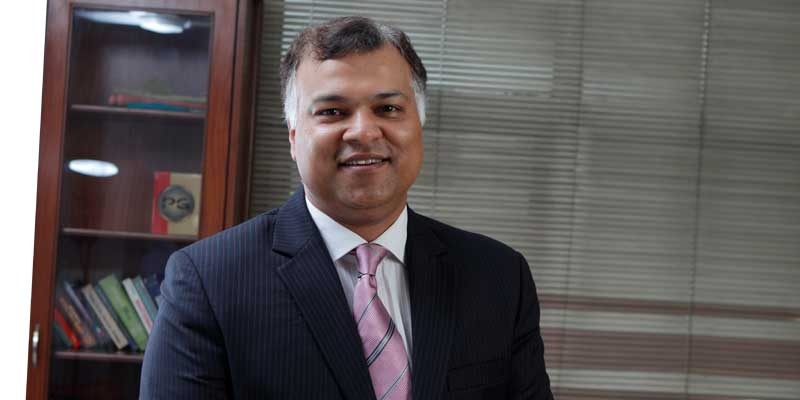
In 1977, Promod Gupta (after quitting his job as a Scientist at DRDO) started PG Electroplast with an aim to establish manufacturing sector in India. Today, PG Electroplast Ltd (PGEL) has emerged as one of India's leading electronics manufacturing services providers. Promod Gupta's son Vikas Gupta, Managing Director of PGEL, is spearheading the next phase of the company's growth trajectory with a long-term strategic plan. In this interview with Rakesh Rao, Vikas Gupta offers valuable insights into the challenges and opportunities in the electronic manufacturing sector, and PGEL’s future plans.
Could you please elaborate on PG Electroplast’s business model and its manufacturing footprint?
PG Electroplast Limited supplies both fully built units of washing machines, air conditioners, air coolers, LED televisions, and various plastic moulded components and sub-assemblies to all leading consumer durables, consumer electronics, automotive and sanitaryware brands in India.
PG Electroplast has six manufacturing facilities across India in Uttar Pradesh, Uttarakhand and Maharashtra and employs over 2000 people. We incorporated PG Technoplast (PGTL), a new wholly subsidiary last financial year which has recently begun commercial production in a new manufacturing facility this year in Greater Noida, Uttar Pradesh. PGTL is completing construction in another Rs 150 crore fully integrated AC manufacturing facility in Supa, Maharashtra, which we expect to be online before the end of this financial year.
PG operates under many different business models. The two major ones are the OEM and the ODM models. OEM stands for Original Equipment Manufacturing and refers to products that are fully designed by one company and then licensed out to a manufacturer to produce.
Under the ODM (Original Design Manufacturing) business model, we fully research, develop and design products that can meet our target market's demands and can keep pace with the evolving market trends and product technologies. We take special care to ensure our products meet all the sustainability benchmarks and standards that are set by the authorities. Once we have the product design finalized, we work on developing and investing in the tooling and the moulds required to manufacture the product. We then offer our product prototypes to potential clients who will sell our products under their brands. They then do their performance and aesthetics testings internally, request some essential changes before granting our products approval for mass production for their brands. We are seeing this business model grow rapidly as it allows our customers to focus their energies on other parts of the value chain like marketing and sales, distribution, and servicing.
Being one of the leading players in the electronic manufacturing services (EMS) sector, what are the company's priorities at present?
The environment for manufacturing in India is exciting today. With the Indian government's focus on an Atmanirbhar Bharat and the Make in India campaign, substantiated with several of the government's initiatives like Production Linked Incentive (PLI), Phased Manufacturing plan (PMP) etc, the company is seeing good growth opportunities in all its areas of operations.
The government wants to increase domestic value addition in electronics manufacturing to make the industry globally competitive. For that, it is pushing for the development of a robust components manufacturing base, which is directly benefitting contract manufacturers like us. Also, due to the recent geopolitical situation due to the US-China trade war, and supply chain disruptions, an increasing number of companies are adopting a China Plus One sourcing strategy to hedge their risks. This is all leading to nation, increasingly emerging as a preferred manufacturing destination. With this background, our company's primary focus is to grow our capabilities and augment our capacities to be able to capitalise on these opportunities.
While India is a huge consumption market for electronic goods, the majority of these are imported into the country. What are the reasons for this? How can India scale up electronic manufacturing?
In our opinion, the electronics manufacturing industry has suffered a big setback in the last decade due to several reasons. The major reasons were an inverted duty structure due to Free Trade Agreements (FTAs) with East Asian nations. That was a huge blow to the domestic manufacturing as already a fragile industry with low-value addition got further squeezed out due to the Indian markets being flooded by zero duty finished goods imports, while the domestic manufacturers had to pay duties on components. This led to many companies suffering badly financially and operationally and our dependence on imports increased multi-fold.
Though the government in power has done a lot to correct the anomalies but still with subscale manufacturing, the domestic electronics manufacturing sector in India is not at par with competing nations, as it faces a 'disability' of around 8 to 11% due to the lack of proper infrastructure, logistics framework and domestic supply chain, high finance cost, lack of good quality power, insufficient training in required skills, limited design capabilities, and insufficient focus on R&D by the industry.
Historic reliance on imports, which has led to an increasing trade deficit and an increasing trade deficit in a country with a large workforce, talent, and resources can negatively impact the country's overall economic growth. This was well realised by the current dispensation and being well aware of the consequences, the government is working overtime with the industry to make Indian electronic manufacturing competitive vis-Ã -vis the global players. Over the next 2-3 years, we expect a very large scale-up of domestic electronics manufacturing and further reductions in the imports of mobile phones, TVs and ACs.
What are key challenges before the electronic manufacturing sector?
Today, one of the major challenges is the lack of a domestic component ecosystem in the country leading to a deficit in the integrated supply chain at the country level. Hence, we continue to have a large reliance on imported components in major electronics items. Last year this challenge was exacerbated due to China cracking down on electricity consumption and tightening emission standards leading to sharp production cuts and reductions of output for many of our suppliers. This, coupled with high freight costs has not only led to margin pressures but has also impacted our production and deliveries.
Also, in the last 2 years, the repeated resurgence of COVID-19 has made the channel partners increasingly risk-averse, which means they are limiting Inventory at their end. This all leads to production slowdowns due to fears of lockdowns.
There are also a few chronic issues that continue to plague the Indian electronics manufacturing sector like low-value addition, fierce global competition, and unavailability of skilled labour. The resolution of these challenges is critical for the growth of this sector.
Will various schemes (including PLI scheme) announced by the govt for the electronics industry help in overcoming some of these challenges? What are your views? In recent decades, India has consistently ranked as one of the world's fastest-growing economies. The world's largest democracy is quickly becoming one of its largest economies too, which has also brought along with it interest and investments from foreign companies and investors. This growth, however, has majorly been driven by the nation's service sector, with the manufacturing sector playing second fiddle.
One of the most exciting things about our nation is the opportunity it has to harness its young working population. But before it can capitalise on its so-called demographic dividend, it needs to provide its young population with gainful employment. A fact that our current Government knows very well and is working tirelessly towards.
The recent geopolitical situation, owing to the US-China trade war and the COVID-19 pandemic and its accompanying supply chain disruptions, has created a tremendous opportunity. In attempts to de-risk their supply chains, many global companies have had to look to set up their manufacturing bases elsewhere. India is increasingly winning in the China Plus One opportunity. This is due to a variety of factors, but two of the most important are clear government focus on Make in India and country remaining a very large untapped domestic market.
India's electronics manufacturing sector is currently not at par with the competing global nations, as it faces a 'disability' of around 8-11% due to gaps in the nation's infrastructure, logistics framework and domestic supply chain, high finance costs, insufficient training in required skills and lack of focus on R&D. The government realises this and therefore working on a multipronged approach.
On one hand, the Government has been working to provide the required infrastructure for global manufacturing, by setting up manufacturing clusters that are conducive for production and on other Also, schemes like PLI and Phased Manufacturing plan (PMP) are being introduced in several industries to increase the local value addition and develop the Integrated local supply chains.
The Production Linked Incentive (PLI) Scheme are addressing the local disability Issues as the government is providing significant financial incentives on Incremental investment and Incremental output thus attracting large investments in the targeted sectors. As stated in the scheme, its prime objectives include removing sectoral disabilities, creating a robust component ecosystem and subsequently economies of scale, employment generation and enhancing exports.
The scheme has the potential to boost the domestic manufacturing of electronics in India and make the country globally competitive. The scheme entails an incentive of 4-6% on incremental sales of goods manufactured (over the base year) under target segments, to eligible companies, for five years after the base year. In an industry with razor-thin margins, this scheme is a clear gamechanger.
The creation of a components ecosystem is a journey, but with the PLI scheme, that process will get fast-tracked substantially. I am sure that in the next 3-4 years, we will have a large component ecosystem in the country for the manufacturing of finished goods, where the import intensity is relatively higher today. The scheme is also incentivising R&D and the development of core competencies and capabilities which will help the industry become sustainable and globally competitive in the long term.
What are going to be some of the growth drivers for EMS players?
We believe several growth drivers are in place for the growth of electronic manufacturing services (EMS) in India. Some of them are:
1. Low penetration of electronics products; much lower than the global average
2. Positive GDP growth outlook
3. Rising discretionary incomes
4. Huge push from the government to become self-reliant (reduce import dependency) and to increase exports by introducing various schemes
5. Evolving of physical and social infrastructure, better logistics, and expanding e-commerce industry
We believe that the majority of industry growth will come from the localisation of imported finished goods. Due to the emergence of the E-commerce channel in the electronics items, the industry is also seeing the share of manufacturing through ODMs increasing as several private labels are being launched. In private labels of modern retail and e-commerce players, companies are outsourcing their entire end-to-end production cycle to EMS players. It is a significant leap for Indian contract manufacturers, as large electronics enterprises have started believing in the skills of Indian ODMs and their capabilities. Going ahead, we see the share of ODMs in contract manufacturing set to increase further, as that will provide contract manufacturers better profitability and higher growth.
Newer technologies and obsolescence of older products is also a growth driver especially in some of the consumer durables like ACs, washing machines etc. Regulations are forcing companies to launch, and consumers to use, more energy-efficient new-generation products. This is leading to faster replacement cycles and consumers opting for more energy-efficient technologies.
Do you think sustainability and digitalisation (Industry 4.0) will be the key market drivers in the future?
Sustainability is a buzzword today due to the focus on climate change and every government and regulatory body is trying to work towards more sustainable solutions for the day-to-day needs of the population. This is also getting reflected in the products being launched in the electronics Industry. Electronics & electrical solutions are fast replacing the traditional hydrocarbon or traditional solutions in all aspects of life including mobility etc.
In India also, we are seeing a rapidly growing ecosystem for sustainable solutions in different arenas and the EMS players and Indian electronic sector will play their part in the sustainability led solutions for various industries.
Coming to Industry 4.0 and digitisation, it's a journey that manufacturing companies have to undertake to remain relevant and competitive in the long run. We are also working and increasing digitising our organisation and connecting the different silos with the help of new digital technologies available. We have to continuously invest in software and automation. Currently, we use Integrated Enterprise Resource Planning and related software to track procurement, orders, sales, finances, inventory, manufacturing, supply chain and human resources to optimize manufacturing efficiency. We have teams that work to identify gaps in our infrastructure and processes, and subsequently, undertake projects to mend the same.
In an effort towards reducing our carbon footprint, PG Electroplast is increasingly sourcing its electricity from renewable sources. In FY21, the Ahmednagar manufacturing facility has installed a solar power plant capable of generating 1.28 m units annually. The company has also recently signed a PPA for its Greater Noida Plant. PG is always on the lookout for more of these initiatives that will help us in reducing our carbon footprints even further in the coming years.
What are your plans for PG Electroplast?
At PG Electroplast, we have three strategic objectives:
1. To provide the best quality products and components at competitive prices to our customers for all their manufacturing needs
2. To continuously adapt, improve, and grow as per the dynamic business environment
3. To protect the interests of all our shareholders and to create the maximum value for them
As an organisation, we are always working towards achieving these targets. On a personal level, PG was founded in 1977 by my father, Mr Promod Gupta. He had dreamt of manufacturing in India, 45 years back when he quit his job as a Scientist at DRDO to begin this business. In all of our time since, we have never seen an environment so conducive for the growth of our industry.
It is very heartening to see that the government's policies and directions are providing significant impetus to the sector and that the government's goals and PG's goals are completely aligned- to set up a robust components ecosystem in the nation and to achieve economies of scale by catering to the domestic and export demand. After achieving competitiveness vis-a-vis the global players, we can start exporting and help achieve the dream to Make in India for the world.
We have been selected for Room AC Component PLI and we have recently re-launched our TV business, washing machines are doing well for us. And plastic components for consumer durable, sanitaryware and other industries continues to see good growth, so overall we are planning to grow and invest in all our capacities across all our businesses.
Related Stories
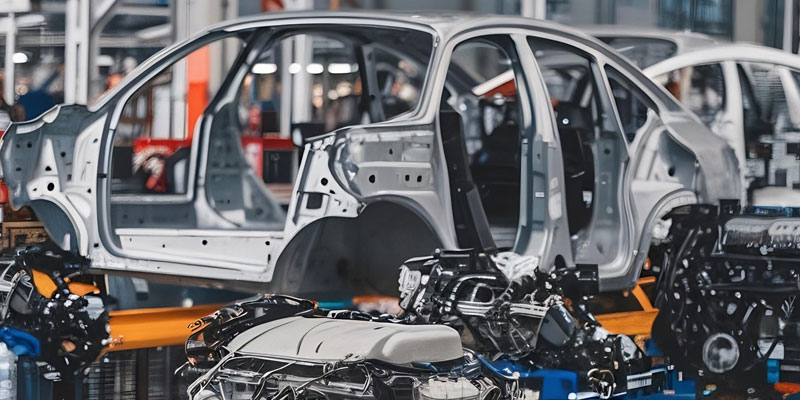
EV transition and tariff wars redefine India’s auto components play
India’s auto component industry is poised to hit $ 145 billion by FY30 from $ 80 billion in FY25. Yet high US tariff, EV transition and heavy reliance on imports from China expose vulnerabilities,..
Read more
For the foreseeable future, multiple fuels will coexist and grow: Farrokh Cooper
In this conversation with Rakesh Rao, Farrokh Cooper, CMD, Cooper Corporation, shares his views on manufacturing, technology and the road ahead.
Read more
Indian Machine Tools Industry Gains Amid Shifting Global Dynamics
India’s machine tools industry is attracting strong global investment, driven by rising domestic demand, precision manufacturing growth and supply-chain realignments, even as global markets slow. ..
Read moreRelated Products

Integrated Electric Gripper S Series
IBK Engineers Pvt Ltd offers a wide range of integrated electric gripper S series.

Geared Electric Motors
Delco Fans Pvt Ltd offers single phase capacitor run and three
phase geared Instrument motors, totally enclosed face/foot mounted.

“Kusam-Keco” Partial Discharge Acoustic Imager - Model - Km-pdai
‘Kusam-Meco’ has introduced a new “Partial Discharge Acoustic Imager Model KM-PDAI.





